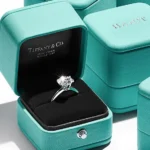In recent years, interest in brand heritage has grown.
A brand may be distinguished from others by a variety of features, including colors, typefaces, and logo designs.
The emotional connection that consumers have with a brand because they believe they know and understand it is often less visible.
The history of a brand may have a significant impact on evoking nostalgia, creating emotional bonds, and fostering brand loyalty.
You will learn in this article how businesses with the benefit of history may provoke emotions and gain consumers’ trust.
Understanding Brand Heritage
The history of a brand, including how long it has been in operation, the path it has taken, and the beliefs, philosophies, and reputation it has built, is known as its heritage.
The brand’s past or heritage may provide it a significant competitive edge over rivals since it fosters emotional connection and trust.
A company’s heritage goes back to the period of its establishment and includes the founders, family history, and values that have been handed down from one generation to the next, shaping what the brand stands for in the eyes of consumers.
Because it is an unbeatable edge that rivals just cannot duplicate, heritage is very important.
The Importance of Brand Heritage
The sheer number of new firms that are founded each year, in part, contributes to the growing significance of a brand’s past. Given the proliferation of new brands, tradition and history are now effective means of building credibility.
The strength of tradition is that it forges an emotional connection with consumers that rivals can’t match.
In a world where everything is changing at a breakneck pace, a brand’s heritage narrative offers customers a concrete connection to the past. The gap between now and a simpler, more tactile period widens as we increasingly live in a digital and virtual environment.
How the corporate brand image can be boosted by heritage
Brand heritage is a feeling of corporate tradition or history that may be conveyed to customers and affects how the brand is seen.
The power of brand heritage may be effectively leveraged via marketing communications, such as advertising and branding campaigns, which can be attractively represented through creative brand storytelling.
The more connections with history and heritage that the brand communicates, the more probable it is that heritage will become recognized as a major brand characteristic and contribute to the company’s reputation.
Brand heritage Inspires Nostalgia
Being able to generate nostalgia, which is more effective than other emotions at evoking favorable connections with goods or services, is part of what makes brand heritage so strong.
Images, scents, and music are some of the most potent nostalgia triggers.
As with the scent of a product, the visual identity, or image style, using songs that are strongly associated with a certain era or historical period may help give your business a feeling of history and heritage.
The potential of heritage to elicit favorable emotions with customers who would then link those sentiments back with the company itself may be used via innovative advertising campaigns like origin tales.
People are more likely to buy from you because of this emotional connection since they feel like it is a part of their own history, too!
In other words, businesses that give their consumers a sense of belonging to the brand’s narrative may foster enduring client loyalty.
Example of a Brand Heritage:
Hermes
In the market today, there are many fantastic instances of brand heritage.
The French clothing company Hermes is among the most effective instances of heritage branding.
The oldest and most established fashion label in the world, Hermes has a strong sense of heritage and history. The company has been family-owned for five generations since Thierry Hermes launched it in 1837.
A company like Hermes promotes distinction and exclusivity in addition to the notion of luxury goods. The business is still renowned for its legendary dedication to quality.
Jane Birkin, who first carried the legendary Hermès Birkin bag in 1984 (in black crocodile leather), gave the name to the handbag, which has since come to represent elegance and class.
Hermès has developed from its early roots in saddlery and exquisite leather products into a luxury goods corporation with retail locations in France and internationally (including the US, Hong Kong, and Japan), while yet managing to preserve its artisanal character.
Many of their consumers develop a link with the brand not just because of its high-quality goods but also because of its rich history, which is a major selling point for the company.
Penguin Books
Penguin is a further illustration of a brand with ties to history and legacy.
According to the genesis tale, a young publisher by the name of Allen Lane was waiting for a train when he decided to visit the railway station bookshop to buy some books.
He was dismayed to discover pricey, subpar books and saw an opportunity to create an alternative that was more reasonably priced and of greater quality.
Everything in the narrative appeals to history and nostalgia, from the connections to rail travel to a period before cell phones when everyone read books.
How to Build a heritage Brand
Your brand either has a history when it comes to creating a heritage brand or it doesn’t. However, just because your brand is young doesn’t imply it can’t benefit from tradition, history, and nostalgia.
Lean on the history of your brand if it exists. Make use of your prior triumphs to support and guide your present actions.
If not, make one by recalling moments in the past when something noteworthy occurred that could be related to what you are doing right now.
Perhaps your company uses a conventional method or tool. Perhaps you can identify with connections from a certain era or a particular traditional viewpoint.
Step 1: Identify Your Brand’s Core Values
The values of a brand serve as a marker for the principles that guide its operations. Such dedication to brand integrity is traditional.
Brand values are often a collection of beliefs or tenets that direct how a business engages with its stakeholders, including its clients, staff, and workers.
Brand value statements describe the organization’s priorities in terms of quality, customer service, innovation, or even just how they engage with suppliers and consumers.
Step 2: Analyze Your Brand’s Philosophy
Every company operates in its own manner.
While some organizations embrace cutting-edge technology, others stick to tried-and-true procedures.
The way a company does business reflects its brand philosophy.
Of fact, a brand’s philosophy may influence its values, but a philosophy often refers to a commitment to a path of action that, in many circumstances, can be traced back through time.
Step 3: Draw on History and Tradition
Many companies are founded from historical events or have ties to traditions, even if not all have a history.
These may take the shape of a cultural practice or connections to a procedure or period of time. Not every brand requires a century of history in order to draw strength from tradition.
For instance, a lot of businesses tie their identity to the industrial revolution.
Joe Gagnon, global chief marketing officer of Caterpillar Inc., which started out making agricultural equipment before expanding to become a worldwide construction and mining giant, believes that it is a part of who they are.
Step 4: Develop Your Brand Story in
Brand narrative and a brand’s story are not necessarily the same thing. A brand narrative is one that comes from the brand rather than being mostly about it. The brand narrative often mimics the path taken by the client.
The narrative of a company’s existence and how its goods and services improve people’s lives is known as its brand story. It offers a structure that aids in addressing issues like “why do we believe what we are doing matters? ”
The brand narrative needs to be based on human values, relevance, and authenticity.
It will take reflection on who you are as an organization, where you’ve been, and where you want to go in order to construct an honest narrative about your brand.
Before creating the correct message, you must understand who your target audience is since, when done effectively, storytelling may help create enduring connections with clients.
Step 5: Use Messaging to Connect History
You must then include that heritage into your brand messaging and communications after mapping the origins of your brand, its activities, or links to the heritage you want your brand to be associated with.
This is how.
Use images to illustrate the history
Post pertinent material on social media.
Promote traditional-related events
narrate tales of a prestigious past
Produce movies that highlight the true alignment
Conclusion
Many companies do not benefit from the Over To You Heritage gift. Those who do need to take that heritage’s worth into account when developing their positioning, communication, and marketing strategies.
If you do it properly, you may connect with a tangible sensation of nostalgia that is difficult to match or rival.






![What Is A Broad Differentiation Strategy? [The Definitive Guide]](https://naumandigital.com/wp-content/uploads/2023/10/WhatsApp-Image-2023-10-24-at-3.01.30-PM-600x400.jpeg)
![What Is Strategic Branding? [Easy Guide]](https://naumandigital.com/wp-content/uploads/2023/02/1-600x400.jpg)
![What is Branding? [Easy Guide]](https://naumandigital.com/wp-content/uploads/2023/02/Logo_design_branding-1-600x400.jpg)
![What is Brand Positioning [Strategies, Tactics and Examples]](https://naumandigital.com/wp-content/uploads/2023/10/How-to-Rock-Climb-A-Beginners-Guide-6-600x400.jpg)